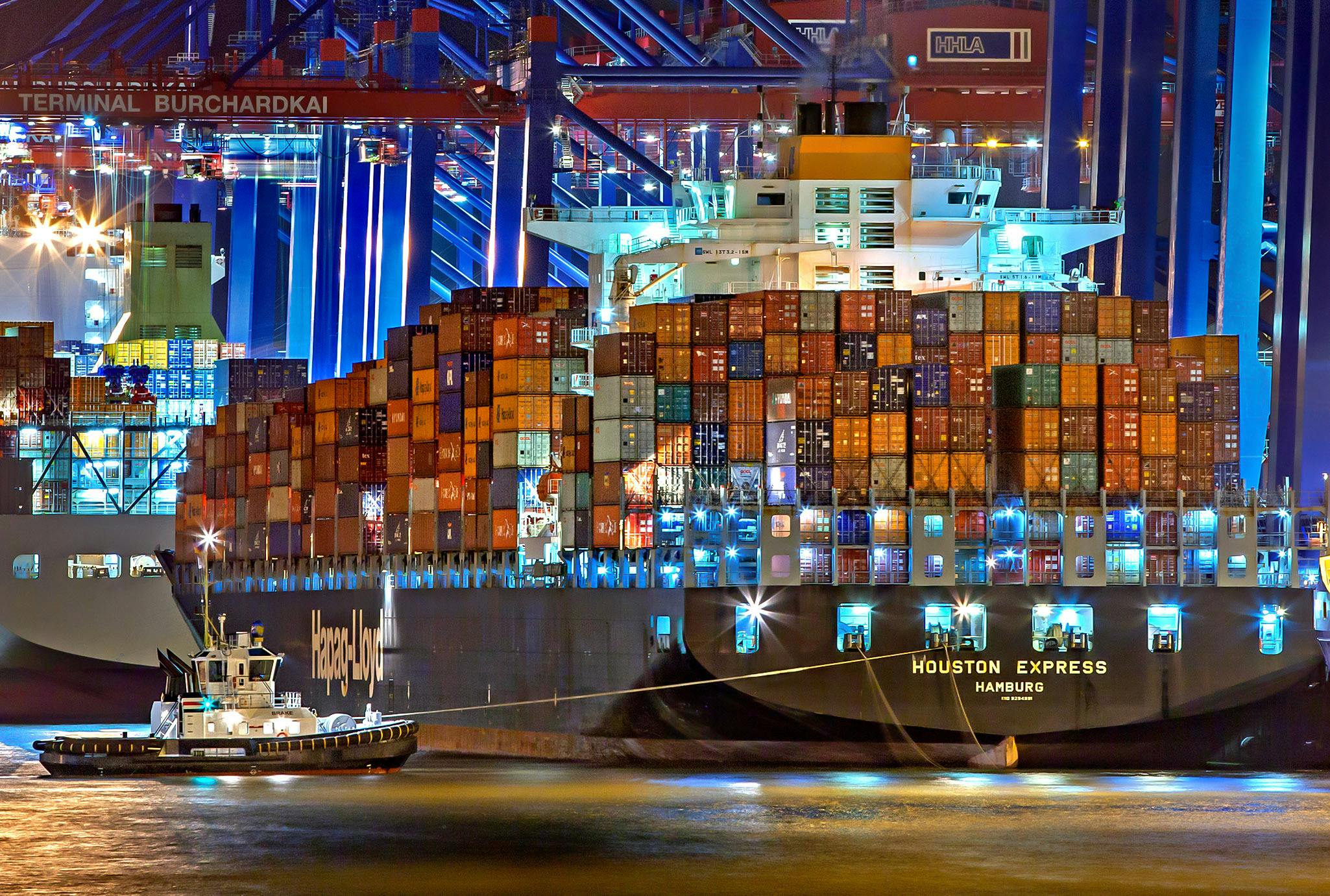Beyond the Spectacle Analysis
Presidential tariff power has emerged as the most consequential expression of executive authority in Trump’s second administration, revealing how statutory frameworks designed for emergencies can be repurposed for ongoing policy objectives when institutional constraints weaken. While media coverage focuses on market reactions and potential inflation, the deeper significance lies in how trade policy has become detached from traditional checks and balances, creating a domain of virtually absolute presidential authority.
The biggest tariff increase in a century: scale and scope
This analysis examines the institutional and economic implications of what is rapidly becoming a fundamental restructuring of global trade relationships.
The administration’s April 2nd announcement instituted sweeping tariffs that represent the most dramatic shift in U.S. trade policy in nearly a century. The 10% baseline tariff on virtually all imports, supplemented by country-specific tariffs as high as 49%, will increase the average U.S. tariff rate from approximately 2% in 2024 to over 20% [1]. This magnitude draws direct comparisons to the Smoot-Hawley tariffs of 1930, which economists widely regard as having deepened the Great Depression.
The implementation timeframe is equally significant. With just three days between announcement and enforcement, companies and trading partners have minimal time to adjust, creating immediate disruption across global supply chains. This compressed timeline appears designed to maximize leverage while minimizing the opportunity for organized resistance or mitigation strategies.
Trump holds all the cards: the institutional vacuum
What distinguishes the current tariff initiative from previous trade actions is the remarkable absence of institutional constraints. As Matt Peterson observes, while Trump has faced significant resistance in other policy areas, “when it comes to tariffs, Donald Trump holds all the cards” [2]. This authority derives from a strategic use of the International Economic Emergency Powers Act (IEEPA), which grants the president broad authority during declared emergencies.
The administration’s declaration that persistent trade deficits constitute “an unusual and extraordinary threat to the national security and economy of the United States” [3] effectively transforms an ongoing economic condition into an emergency. This interpretation stands in notable tension with the original legislative intent, which specified that “emergencies are by their nature rare and brief, and are not to be equated with normal, ongoing problems” [4].
This institutional vacuum extends beyond formal authorities to include the absence of internal administration dissent. Unlike Trump’s first term, when economically liberal advisors frequently “clashed with protectionists” and sometimes actively sabotaged tariff initiatives [5], the current administration appears unified behind the president’s trade agenda, or at least unwilling to challenge it.
This is not a negotiation. It’s a national emergency: strategic ambiguity
The administration’s public justifications reveal significant strategic ambiguity about whether the tariffs represent a negotiating position or a permanent policy shift. Multiple administration officials have offered contradictory frameworks:
Treasury Secretary Scott Bessent described the tariffs as “a floor, not a ceiling” while suggesting they represent a negotiating position: “If you drop yours, we’ll drop ours” [6].
An anonymous senior administration official directly contradicted this framing: “This is not a negotiation. It’s a national emergency” [7].
Commerce Secretary Howard Lutnick emphasized ongoing dialogue: “Our teams are talking to all the great trading partners today” [8].
The president himself embraced the negotiation framework while maintaining the emergency declaration: “Tariffs give us great power to negotiate. They always have” [9].
This strategic contradiction serves multiple purposes. The emergency declaration provides legal authority under IEEPA, while the negotiation framework offers a potential off-ramp if market reactions prove too severe. Most importantly, it maintains maximum presidential discretion over both the implementation and potential resolution of trade tensions.
The end of the post-war economic order: international response
The international response has been swift and substantial. China has announced matching 34% tariffs on all U.S. imports effective April 10th, expanded export controls, and added American firms to its “unreliable entities list” [10]. Canada’s Prime Minister Mark Carney has pledged to match the 25% tariffs on automobiles [11].
More significant than these specific responses is the broader erosion of trust in American institutions. As Michael Medeiros of Wellington Management observes, “the magnitude and way these tariffs were created have eroded trust among U.S. allies,” noting that “trust in U.S. institutions has been coming down, and those concerns have now been accelerated” [12].
This institutional dimension helps explain market reactions that might otherwise appear counterintuitive, such as the weakening dollar despite tariff increases that would typically strengthen it. Markets appear to be pricing in not just the direct economic impacts of tariffs but also the institutional uncertainty they create.
Unknown unknowns: economic implications beyond inflation
The immediate market response to the tariff announcement was severe, with the S&P 500 losing approximately $2.5 trillion in market value in a single day [13]. This reaction reflects concerns about potential stagflation, where economic growth slows while inflation accelerates.
However, the longer-term economic implications extend beyond these immediate effects to include:
Global economic fragmentation
The scale and breadth of the tariffs potentially mark what Eswar Prasad, former head of China research at the IMF, describes as “the end of a period when barriers to cross-border trade were falling and boosting global trade integration” [14]. This fragmentation would reverse a decades-long trend toward greater global economic integration that has been a central feature of the post-WWII economic order.
Supply chain reconfiguration
Companies face unprecedented pressure to reconfigure global supply chains, potentially accelerating “reshoring” or “friendshoring” initiatives. However, the compressed timeline and uncertainty about which countries might receive tariff exemptions complicate strategic planning.
Investment uncertainty
For investors, the new tariff regime creates what BofA Securities’ Savita Subramanian calls “unknown unknowns that can lead to severe confidence shocks” [15]. This uncertainty particularly affects companies with global exposure and complex supply chains, potentially shifting investment toward companies with domestic focus, stable earnings, and dividend yields.
A permanent state of exception: the core institutional question
Beyond its economic effects, presidential tariff power raises fundamental questions about the institutional architecture of economic policy. The ability to unilaterally impose tariffs of this magnitude, justified as an emergency response to ongoing conditions, represents a significant expansion of presidential economic authority.
This authority now appears largely unchecked by Congress, courts, or even internal administration dissent. The president’s declaration that persistent trade deficits constitute an emergency effectively establishes a permanent justification for emergency powers, creating what legal scholars might describe as a “permanent state of exception” where normal constraints on executive authority are indefinitely suspended.
Our view: where this leads
Economic bloc formation
The exercise of presidential tariff power in such an unconstrained manner will likely produce several significant developments in both international relations and domestic governance:
First, we anticipate accelerated economic decoupling between major economic blocs. While complete deglobalization remains unlikely, the current trajectory suggests the formation of more clearly defined economic spheres aligned with geopolitical interests. This represents not just an adjustment to existing trade patterns but a fundamental restructuring of the global economic architecture that has prevailed since World War II.
Institutional counterbalancing
Second, the concentration of trade authority in the presidency will likely prompt institutional responses from other economic actors. Congress may eventually seek to reclaim some of its constitutional authority over trade, though partisan alignments currently make this unlikely. More immediately, we expect state governments, industry associations, and multinational corporations to develop parallel structures to manage trade uncertainty, potentially including state-level trade agreements, industry-specific protocols, and corporate self-regulation.
Economic reality as the ultimate constraint
Third, the economic feedback mechanisms from tariffs will eventually constrain even largely unchecked presidential authority. While the administration currently appears willing to accept significant market volatility, sustained inflation or recession would create political pressures that even the most institutionally insulated administration cannot ignore. The critical question is whether these economic feedback mechanisms will manifest quickly enough to prevent long-term structural damage to both the U.S. economy and the global trading system.
The precedent for future administrations
Fourth, the precedent being established extends well beyond trade policy. By defining an ongoing economic condition as an emergency justifying exceptional powers, the administration creates a template that future presidents of either party could apply to virtually any persistent economic challenge, from income inequality to climate change. This represents a potentially transformative shift in how economic policy is formulated and implemented in the American system.
The concentration of economic authority in the presidency represents a significant departure from the institutional balance that has characterized American economic governance for generations. While immediate attention focuses on inflation concerns and market reactions, the more consequential impact may be on America’s constitutional arrangements and global economic leadership.
References
[1] Capital Economics. “U.S. Tariff Analysis,” Economic Report, April 2025.
[2] Peterson, Matt. “Why Trump Alone Will Say When Tariff Pain Ends,” Barron’s, April 3, 2025.
[3] Executive Order 14115. “Addressing the National Emergency Caused by Persistent Trade Deficits,” April 2, 2025.
[4] U.S. House Committee on International Relations. “Report on International Economic Emergency Powers Act,” 1977.
[5] Woodward, Bob. “Fear: Trump in the White House,” Simon & Schuster, 2018.
[6] Bessent, Scott. “Interview on Meet the Press,” NBC News, March 2025.
[7] Senior Administration Official. “Background Briefing on Trade Policy,” White House, April 2, 2025.
[8] Lutnick, Howard. “Interview,” Bloomberg Television, April 4, 2025.
[9] Trump, Donald J. “Remarks to Reporters,” Miami, Florida, April 4, 2025.
[10] Ministry of Finance of the People’s Republic of China. “Statement on U.S. Tariff Measures,” April 5, 2025.
[11] Carney, Mark. “Statement on Trade Policy,” Office of the Prime Minister of Canada, April 3, 2025.
[12] Medeiros, Michael. “Trade War Analysis,” Wellington Management, quoted in Barron’s, April 4, 2025.
[13] S&P Global. “Market Value Analysis,” April 3, 2025.
[14] Prasad, Eswar. “Analysis of Tariff Impact,” Cornell University, quoted in Barron’s, April 4, 2025.
[15] Subramanian, Savita. “Client Note on Tariff Implications,” BofA Securities, April 3, 2025.


Leave a Reply